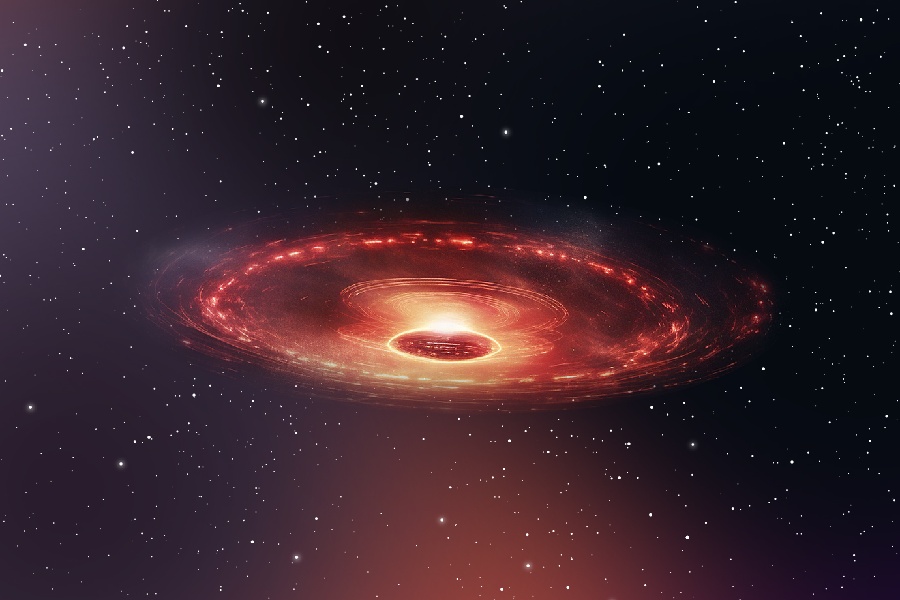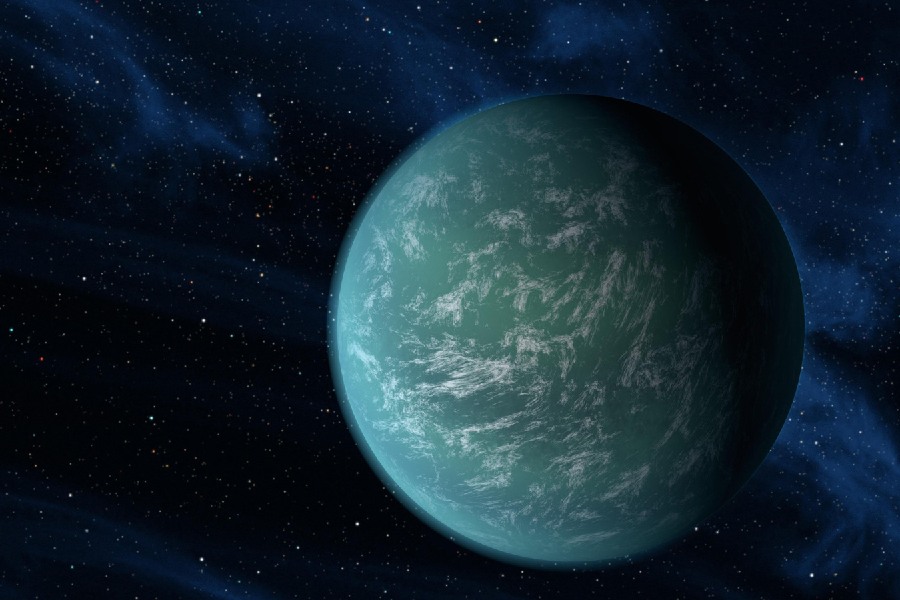The Sombrero Galaxy, with its distinctive disk-and-bulge structure, resembles a Mexican hat. It contains billions of stars and numerous planetary systems. Yet, little is known about the planets that may exist there, shrouded in the dust and gasses of this galaxy 28 million lightyears from Earth.
What worlds lie within this island universe far beyond our own Milky Way? With so many stars and stellar nurseries, there must be exoplanets forming around young stars and orbiting older ones.
This article explores the prospects for detecting and characterizing Sombrero Galaxy planets. While planets beyond our Solar System are called exoplanets, the label for planets beyond the Milky Way is ‘intergalactic planet’.
The Sombrero, with its 100 billion stars, offers intriguing possibilities. What properties might such far-flung planets have? Their discovery and analysis present challenges. But understanding these Sombrero galaxy planets also has the potential to better understand planet formation in different galactic environments.

Are There Planets in the Sombrero Galaxy?
Are there planets in the Sombrero Galaxy? As of now, we don’t have a confirmed answer. The Sombrero Galaxy is a vast space, and studying it requires advanced telescopes and technology.
Researchers are using these tools to search for signs of planets, but conclusive evidence is yet to be found. Our understanding of the Sombrero Galaxy’s planetary systems continues to evolve with scientific advancements.
Planetary System in the Sombrero Galaxy
A planetary system consists of planets orbiting a star. It also typically includes moons, asteroids, comets, and debris. Galaxies contain billions of stars, many of which can host planetary systems. However, the properties of planetary systems may vary between galaxies depending on factors like stellar characteristics.
The Sombrero Galaxy likely hosts a high number of exoplanet systems, given its estimated 100 billion stars. More stars means more chances for orbiting planets to form.
The galaxy also features active stellar nurseries that produce protoplanetary disks, out of which planets emerge. With so many stars featuring a diversity of types, a variety of exoplanets may be possible in the Sombrero Galaxy. These may range from gas giants to terrestrial planets and more.
The elemental abundances and other compositional factors of the Sombrero Galaxy would shape what kinds of planets form there. Worlds coalescing from the same galactic raw materials would share similar makeups.
Meanwhile, energy radiating from the galaxy’s various stars would interact with exoplanets over time, influencing their atmospheric traits depending on the star’s properties. In addition, the overall structure and dynamics that characterize the motion of the Sombrero Galaxy would determine the stability and lifespan of its planetary systems.
Discovery of planets in Sombrero Galaxy
It is hard to see planets in the faraway Sombrero Galaxy, but astronomers have some methods they try by taking detailed photos of stars to see if any planets are orbiting them.
They also precisely track the motions of Sombrero Galaxy stars in a hunt for wobbles indicating the presence of orbiting planets. Additionally, the use of cutting-edge telescopes with enhanced capabilities may aid the search as well.
Research on Sombrero Galaxy planets
While no planets have yet been confirmed orbiting the myriad stars of the majestic Sombrero Galaxy, progress is underway. Astronomers conduct computer simulations, modeling the array of possible worlds in formation throughout its expanse.
Careful analysis of galactic light reveals clues into environmental conditions congenial for exoplanet evolution. Targeted observation campaigns monitor individual Sombrero Galaxy stars, scouring for minute movements indicating the presence of unseen planetary companions.
Step by step, research initiatives are bringing the galaxy’s prospects for habitation into focus – laying the groundwork for direct detection feats once deemed impossible. As methods advance, veils lift towards revealing what worlds wander alien skies so far removed from our own celestial neighborhood.
Someday an exoplanet may be found orbiting a Sombrero Galaxy star. That would be an exciting discovery, and it would help us learn more about planets in other galaxies. For now, the research continues piece by piece. This moves us closer to spotting the Sombrero Galaxy’s first worlds.

Exoplanetary systems in Sombrero Galaxy
Characteristics of Sombrero Galaxy exoplanetary systems
The Sombrero Galaxy has different kinds of stars that could have planets – old stars are in the central bulge part, while young stars with new planets are mostly in the spiral arms. Stars can range from hot and massive to smaller and cooler.
Planet orbits can be very stable far out in the Sombrero Galaxy; the outer areas allow for peaceful orbits without disruption. Closer-in orbits can get very chaotic from gravity issues, and other things also impact how orderly the planets move, like radiation from stars and the density of matter.
Even though it’s another galaxy, some Sombrero Galaxy planets might support life. Ones orbiting older steady stars, far enough away but not too far, might be habitable. But it depends on many complex things about that galaxy, the stars, and the properties of the planets themselves.
Diversity and uniqueness of Sombrero Galaxy systems
When it comes to how many stars are in the Sombrero Galaxy, we can conclude that there are over 100 billion stars. This means it could have a wide variety of solar systems we can’t even imagine. Its worlds would be shaped by cosmic forces, different from the planets we know. Just finding even a tiny fraction of the Sombrero’s planets would grow our knowledge.
It would teach us more about how diverse planets can be across the universe. This beautiful galaxy gives clues about how worlds form, evolve, and sustain life both nearby and unbelievably far away.
The first exoplanet confirmed in the Sombrero Galaxy would be thrilling. It would open our minds to more galactic places with suns and planets of their own. We would appreciate more how abundant and wondrous creation is at the grandest scales.
Comparison to Other Galaxies With Exoplanets
Astronomers can compare planets in the Sombrero Galaxy to other galaxies, like our Milky Way, which also has over 100 billion stars. This can reveal common patterns in how planets form, as well as differences between galaxies.
Observations of other galaxies help predict what Sombrero Galaxy planets might be like. With more discoveries, the Sombrero Galaxy may show unique planet traits, like especially large gas planets or many small, rocky worlds.
Its dynamics could also shape systems differently than other galaxies. Understanding the Sombrero Galaxy’s exoplanet signatures will take more study over time, but steadily, we are unlocking galactic mysteries beyond our Milky Way.
Conclusion
This journey through prospects for exoplanetary systems in the majestic Sombrero Galaxy activates the imagination. We considered this galaxy’s vast collection of over 100 billion stars ripe with chances for orbiting Sombrero Galaxy planets we have yet to discover.
We surveyed approaches for revealing these worlds, despite the challenges of their extragalactic distances from Earth. Finally, we explored how potential future confirmation of planets in the Sombrero Galaxy could enhance appreciation of cosmic creation at grand scales.
As astronomical instruments and data analysis techniques advance, perhaps someday soon, that first faraway exoplanet around a Sombrero Galaxy star will come into view. When it does, remember the wonder you feel looking up at the cosmos.
Every world ever confirmed expands the horizons and knowledge of diverse planetary nurseries sprinkled across the stars. We hope this article has stretched your mind to the abundant possibilities in our galaxy-filled universe.
